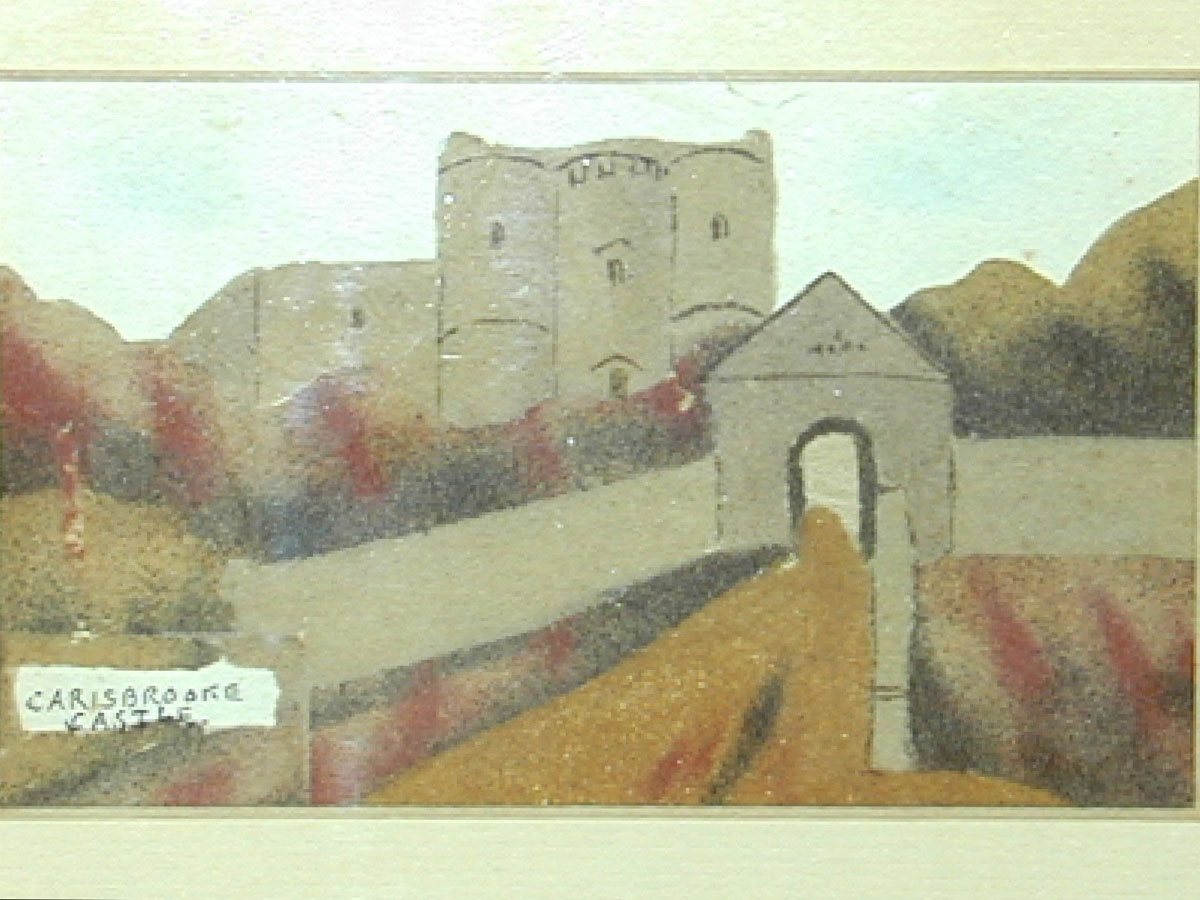
Sand Picture
1840's
Marmotinto is the art of creating pictures using coloured sand or marble dust and known as sand painting. Originating in Europe, and probably based on the Japanese craft of bonseki 'tray-painting'. George III hosted a dinner party in 1783 where a display of unfixed coloured sands, sugars and marble dust were arranged under glass upon the surface of the dinner table in decorative patterns, including fruit and flowers, and exotic birds which was executed by the Bavarian table-decker Benjamin Zobel, a friend of George Morland, a painter prominent in the Isle of Wight School of painting. The King and his courtiers were so impressed with the resulting picture, it was suggested that Zobel find a way to make his compositions permanent and hence the craft of marmotinto or sandpainting was born and proved most successful under the patronage of various members of the royal household including the then Duke of York.
In the early 19th century the craft became popular as the tourist industry developed on the Isle of Wight particularly at Alum Bay, famous for its natural highly coloured sands. Visitors created their own souvenirs and pictures when they disembarked directly onto the beach from the decks of mainland steamers. The locals soon realised an opportunity to supplement their meagre incomes by developing a market for small framed sand pictures and compressed sand patterns inside glass jars. There are some examples of Alum Bay sand pictures at Osborne House and Carisbrook Castle. The Victoria and Albert Museum has Queen Mary's collection of Georgian sandpaintings.
Commonly these pictures featured castles, churches or Osborne House, the summer retreat of Queen Victoria. This one, however, has the more unusual subject of a labourer on his way to work with his tools slung over his shoulder. It has touches of watercolour to add detail and is signed and dated on the reverse. It is mounted within a period maple frame.
Cataloguing
Carisbrooke Castle written in ink, the gateway and the castle with hills beyond, in shades of ochre, terracotta and natural sand on card hand painted with sky, 3 1/4 x 5 in or 8 x 13 cm, acid free mount and old oak frame, 6 3/4 x 9 in or 17 x 23 cm.
Condition
There is a slight tear to the very top of the picture, but when hung this hardly shows.
Comments
Sand pictures were both professionally and amateur made. I think this was the former.George III where two German confectioners were employed to create table decorations initially out of sugar but then from coloured sands and marble dust. By the 1780s, they had developed a way to affix the sand onto light board thereby making it feasible to create permanent pictures. By the nineteenth century sand painting had become a popular pastime for amateurs and helped to boost tourism to the Isle of Wight where there was a rich supply of colourful sands
Price: £38 | $50 | €40
